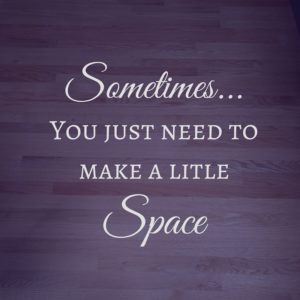You may or may not have noticed that my blog has been on hiatus for almost two months now. At first this wasn’t on purpose — I didn’t plan to stop writing. But I did and one week became four, became six.
For the past two months I’ve been turned inward, moving through a phase of transformation that has left the rest of my life on pause. I haven’t been blogging. I haven’t been marketing my coaching business. I haven’t been keeping up with the chores and minutiae of everyday living the way I usually do.
This is what the first phase of change looks like.
It’s inward-turning and silent. It’s still to the point of motionlessness.
When you’re deeply buried in the first quiet stirrings of a profound shift, you move so slowly that some days you might not move at all — a breath caught in your own tightened throat.
To pause in this way can feel so uncomfortable.
In the first weeks after I slowed all the way down to my stop, I felt like everything was falling apart — or maybe that I was falling apart and taking my life down with me.
It was hard to watch.
It was hard to watch myself fall apart, to watch the habit and abilities I had attached my self-worth to fall away until it felt like there was nothing left but me — naked, needy, useless.
In part, I stopped writing because I felt I had nothing to offer, nothing to give.
I don’t want to sugar-coat this because this is what the beginning of a transformation looks like.
In order to make room for what will be, what was needs to fall away.
And in between what was and what will be you may feel as raw and naked as a newborn baby, squalling with the first stinging breath of air in your unaccustomed lungs.
I think that all change begins like this. It’s awkward and uncomfortable and ungainly and in many ways objectively awful-feeling.
And when it happens to you, here’s what you do.
You take care of yourself.
It sounds nice on paper, and maybe what you imagine in your head when you read these words is a kind of retreat or idyll. Cozy mornings, long baths, quiet hours spent reading or journalling — but in my experience taking care of yourself in the middle of a meltdown is not nearly so romantic.
Because when you get down to brass tacks, taking care of yourself in a meltdown looks mostly like giving yourself permission to not-do all the things you want to be not-doing.
- It looks like making oatmeal for dinner instead of cooking when you’re tired.
- It looks like calling in sick when you wake up in exhausted and aching and feeling awful.
- It looks like not-doing anything that isn’t essential: laundry when you’re out of underwear, the grocery store when you have literally nothing left to eat
If you’re like me then you have words for yourself when you live this way.
Lazy. Useless. Irresponsible. Worthless. Slob. Slacker. Whiny. Disappointment. Burden.
They’re not very nice words, are they?
Your words would maybe be different than mine, but I think most of us tend toward self-judgement when we feel like we’re falling apart.
I think that most of us have a habit of feeling like letting things fall apart is not okay.
It’s hard to recognize in the moment that these words are lies.
There’s no actual difference between “barely holding it together” and “thriving” — you’re living your life whether you made oatmeal for dinner or three loving courses from scratch.
It’s good. You’re alive. It’s enough.
You are doing enough.
In moments of meltdown it can be hard to remember this, which is why it’s your job to keep remembering.
In the middle of the meltdown taking care of yourself looks like giving yourself permission to fall apart.
To keep whispering softly: “hey, it’s okay, you’re okay, it’s going to be okay” to that scared little part of you that’s deathly afraid of letting things fall apart.
When you’re ready to make a big shift it’s going to feel like you’re falling apart. This is because the old you is falling apart… you are shedding the skin that no longer fits you and it’s going to look ugly at first.
(There’s an awkward beauty to that ugliness if you look long enough.)
So when it happens — because it happens to all of us eventually: take care of yourself.
From moment to moment, just keep asking: “What’s the kindest thing I could do for myself right now?”
Do that.
Much love,
Jessica


![By Frode Inge Helland [CC BY-SA 3.0], via Wikimedia Commons](http://jessicaruprecht.com/wp-content/uploads/2016/05/willing-to-wobble-300x300.jpg)